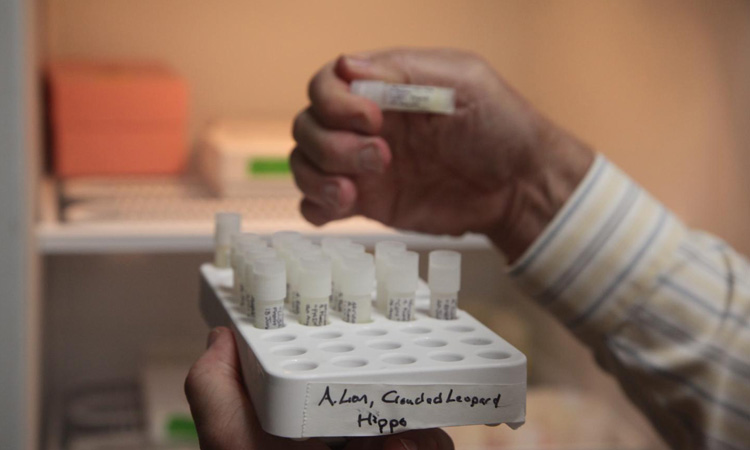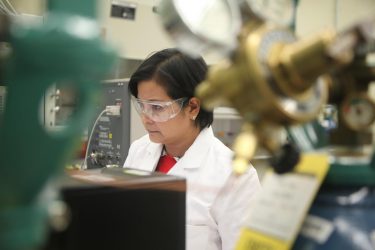NIST expands database to help identify unknown compounds in milk
- Like
- Digg
- Del
- Tumblr
- VKontakte
- Buffer
- Love This
- Odnoklassniki
- Meneame
- Blogger
- Amazon
- Yahoo Mail
- Gmail
- AOL
- Newsvine
- HackerNews
- Evernote
- MySpace
- Mail.ru
- Viadeo
- Line
- Comments
- Yummly
- SMS
- Viber
- Telegram
- Subscribe
- Skype
- Facebook Messenger
- Kakao
- LiveJournal
- Yammer
- Edgar
- Fintel
- Mix
- Instapaper
- Copy Link
Posted: 28 July 2020 | Sam Mehmet (New Food) | No comments yet
Using liquid chromatography, NIST researchers have doubled their database of oligosaccharides in milk, which they say could help infant formula manufacturers to develop optimised products.


Creidt: R. Press/NIST
In a bid to better understand and identify the compounds in milk which are thought to strengthen bones and the immune system, researchers at the US National Institute of Standards and Technology (NIST) have recently doubled the size of a reference library that includes examples of a certain type of carbohydrate found in milk from humans and several other animals.
The expansion of the library aims to help scientists identify the unknown compounds in their own milk samples.
The composition of milk varies from mother to mother, but in general human milk contains 87 percent water and 13 percent nutrients, including fats, proteins, and carbohydrates, the NIST researchers explained. They said that milk researchers often focus on a type of carbohydrate called oligosaccharides, one of the many different sugars in milk. These sugars are known to have a biological effect, such as providing energy for growing babies or contributing to organ development, and scientists often analyse oligosaccharides to understand how they affect cells, tissues and biological processes.
The first version of the human milk oligosaccharide (HMO) library, released in 2018, consisted of 74 oligosaccharides. To build it, NIST chemist Connie Remoroza and her colleagues analysed components in a milk sample from NIST Standard Reference Material (SRM) 1953. They used a process called liquid chromatography to separate the sample into its finer components and an instrument called a mass spectrometer to create chemical fingerprints known as mass spectra.


Remoroza operates a mass spectrometer, a laboratory instrument used to identify chemical compounds. “We want to find out as many details as we can about milk because it is so important, but so little is known about its chemistry,” Remoroza said.
Credit: R. Press/NIST
The team then compared those unknown spectra against a massive database of 1.3 million spectra of 31,000 compounds called the NIST Tandem Mass Spectral Library. The team identified an additional 80 new oligosaccharides, bringing the total to 154. The new HMO library also used milk samples from SRM 1954, Organic Contaminants in Fortified Human Milk.
Researchers were also able to identify new compounds that had never been reported in milk before, such as one type of oligosaccharide that contained 15 monosaccharide units, which are said to be the building blocks of carbohydrates.
After mass spectrometry and liquid chromatography are used to produce raw data, it is then processed in order to extract the mass spectra to identify the unknown compounds. “The identification of unknown compounds depends on state-of-the-art methods. Many oligosaccharides are now known because of improved sensitivity of the mass spectrometers, combined with NIST search software,” said Remoroza.
Once the unknown compounds are identified, they are included in the library.
Aside from human milk, Remoroza and her colleagues have also expanded the coverage of other types of mammalian milk. They analysed four different nonhuman samples thanks to collaborations with the Smithsonian’s National Zoo and Conservation Biology Institute and the Philippine Carabao Center.
They analysed an African lion sample, a Saanen goat sample, an Asian water buffalo sample, and bovine (cow) samples came from NIST’s own SRMs 1549a and 1849a. The NIST researchers identified 90 oligosaccharides from these samples, 25 of which were also found in human milk.
“Many researchers will hopefully be able to find NIST milk mass spectral library useful for analysing their samples,” said Remoroza, noting that the milk library is especially useful to infant formula manufacturers. “Scientists are interested in identifying the oligosaccharides in milk because they want to determine if these can be added to infant formula so babies can now get the essential nutrients,” said Remoroza.
The researchers stated that they will continue to identify the different types of oligosaccharides in human milk and expand their collection of nonhuman mammalian milk. They will soon be analysing milk from black and white pigs (in collaboration with Mariano Marcos State University in the Philippines), rhesus monkeys (with the University of Wisconsin) and dolphins (with the National Oceanic and Atmospheric Administration, or NOAA).
Related topics
Health & Nutrition, Liquid chromatography–mass spectrometry (LC-MS), Research & development









